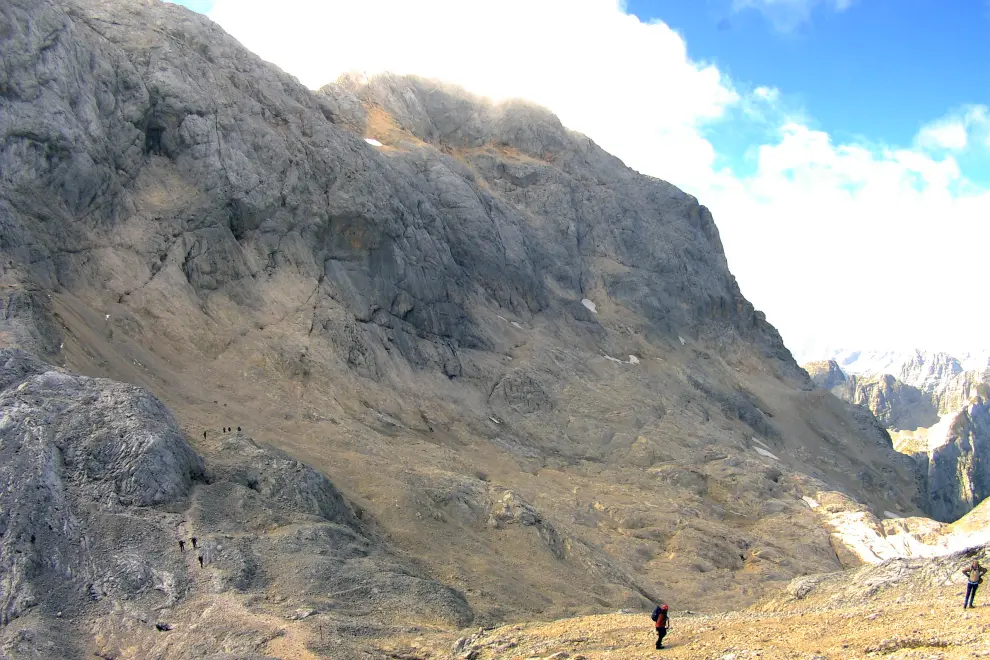Triglav glacier under imminent threat
The glacier below Slovenia's highest peak, Mt Triglav (2,864 m) is under an imminent threat of disappearing with the latest measurements showing it has split into two parts, shrunk and thinned in the past year.
Geographers carried out geodetic measurements of the glaciers below Mt Triglav and Mt Skuta (2,532 m), the only two remaining in the country, at the end of September.
The effort was headed by Miha Pavšek from the Anton Melik Institute of Geography, who told the Slovenian Press Agency that they were surprised by the results.
The Triglav glacier has split into two parts, and the separate patches of melting ice are covered with gravel, so the ice is practically invisible, he said.
The two patches combined measured less than 0.2 hectares, which is the smallest area ever measured. Pavšek believes the current generation is one of the last to see the remains of the glacier in person.
 Geodetic measurements carried out at the Triglav glacier below Slovenia's highest peak. Photo: Anton Melik Institute of Geography
Geodetic measurements carried out at the Triglav glacier below Slovenia's highest peak. Photo: Anton Melik Institute of Geography
Measurements of the glacier below Mt Skuta, the third highest peak in the Kamnik-Savinja Alps, meanwhile yielded better results, with its area remaining the same as last year - 1.2 hectares.
"Unlike the Triglav glacier, I dare say [Skuta glacier] will persist for at least a few more years," Pavšek said. However, he said these were only the last patches, or "chunks of ice".
Where geographers measured more than five metres of ice on the Triglav glacier last year, this year they found only rocks, which is a further proof of the poor state of the glacier.
The snow and temperature conditions for the glacier have not been favourable this year. The average air temperature at Kredarica (2,513 m) below Triglav in September and October was four degrees Celsius higher than the long-term average.
This year's melting season was the warmest in 68 years, and roughly the same as last year. For the first time since 1955, two consecutive record-warm melting seasons have been recorded at Kredarica.
Last year's measurements were more extensive, and included georadar measurements to obtain data on the thickness and volume of the glaciers. A large number of samples of ice, old snow and glacier water were also taken.
Analyses showed that the ice of the Triglav glacier was around 300 years old at its deepest point, while the dating of the calcite crust under the glacier showed that the glacier was also present around 13,000 to 23,000 years ago.
"The question remains whether the glacier has persisted continuously since then or only since the Little Ice Age, which took place from the mid-15th and the end of the 19th century," Pavšek said.


